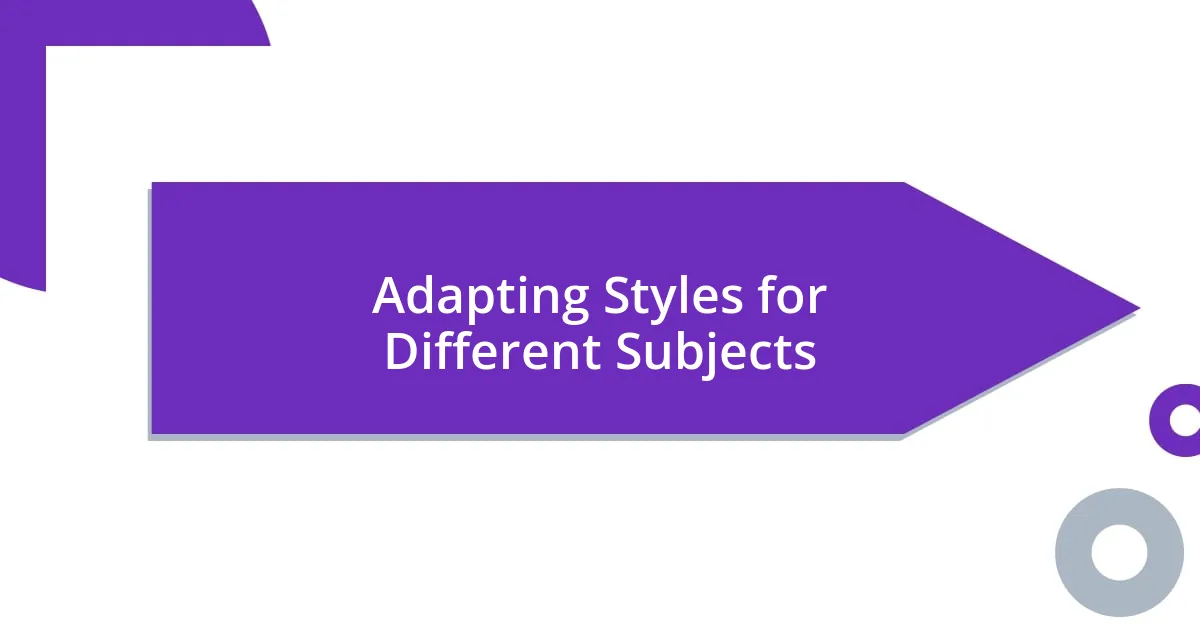Key takeaways:
- Effective posing captures a subject’s essence through body language, angles, and natural movements, enhancing the overall emotional impact of the photograph.
- Establishing trust and open communication with subjects leads to more genuine interactions and authentic expressions during shoots.
- Utilizing different angles can significantly influence the perceived emotion and narrative within a photograph, conveying strength, vulnerability, or energy.
- Adapting posing styles based on the subject and environment fosters deeper connections and results in more meaningful images.

Understanding the Basics of Posing
Posing is more than just placing a subject in front of the camera; it’s about capturing their essence and personality. I remember the first time I worked with a shy client. It took a bit of coaxing to find a comfortable pose that reflected her vibrant spirit. Isn’t it fascinating how the right angle can bring out joy in a subject that initially appears reserved?
Understanding the fundamentals of posing involves not only knowing different positions but also recognizing the importance of body language. Each slight adjustment can send a different message. For example, a relaxed posture with open arms can convey warmth, while a rigid stance might suggest tension. Have you ever noticed how small shifts can drastically change the vibe of an image?
The interplay of light and shadows also plays a key role in effective posing. I’ve had moments where the light perfectly illuminated a subject’s features, enhancing their confidence. It’s like magic when you see a person come alive through the lens, isn’t it? Learning to utilize available light sources can elevate your photography to another level, creating depth and emotion in each shot.

Communicating with Your Subject
When it comes to communicating with your subject, establishing trust is essential. In my experience, taking a few moments to chat before the shoot can really break the ice. I recall a session with a couple who were initially anxious. After a short conversation about their favorite hobbies, they relaxed, and it transformed their poses into something more genuine and relatable.
Here are some effective strategies for enhancing communication during a shoot:
-
Ask open-ended questions: This encourages subjects to share their thoughts and feelings, paving the way for natural interactions.
-
Use positive reinforcement: Compliments can boost confidence, helping subjects feel more at ease and photogenic.
-
Demonstrate poses: Sometimes showing a pose yourself can ease any tension, making the subject feel more comfortable trying it out.
-
Maintain eye contact: This builds connection and shows your subjects you’re genuinely engaged in capturing their essence.
-
Be patient and adaptable: If something isn’t working, don’t hesitate to switch things up; flexibility can lead to unexpected, beautiful moments.

Using Angles and Perspectives
Utilizing different angles and perspectives can significantly transform how a subject is perceived in a photograph. I’ve found that a lower angle can infuse a sense of power or grandeur, while shooting from above often evokes a feeling of vulnerability. It’s fascinating to experiment with how the view we choose can alter the story being told through the lens. Have you ever tried crouching down to capture a child’s world? The results can be heartwarming, revealing the magic in their everyday surroundings in a way that higher angles simply can’t.
In my experience, the angle of the shot can communicate much more than just a visual aesthetic; it conveys emotion and intention. When I shot a series for a local band, I experimented with various perspectives. From a side angle, I could highlight their dynamic interactions, bringing life to the performance. The difference was palpable; the side shots were vibrant and full of energy compared to the more static front-facing images. It’s moments like these that remind me how much impact the right perspective can make on the final image.
The intersection of angles and subjects requires a bit of creativity and boldness. I once decided to photograph a friend amidst a bustling street scene, and I aimed slightly downwards, allowing the chaos around her to frame her serene demeanor. This contrast created a profound narrative of peace amid chaos. It was a simple adjustment, but it added such depth to the story being told. There’s something incredibly rewarding about finding that perfect angle that resonates with the viewer.
| Angle Type | Emotional Impact |
|---|---|
| Low Angle | Conveys strength and authority |
| High Angle | Evokes vulnerability and diminishment |
| Side Angle | Shows interaction and energy |
| Overhead Angle | Creates a sense of isolation or overview |

Incorporating Natural Movements
In my photography journey, I’ve learned that incorporating natural movements can breathe life into my subjects. For instance, during a family shoot at the park, I encouraged them to walk together and interact as they would on any regular day. Watching them laugh and play, I realized the joy in capturing those spontaneous moments often yields the most authentic expressions.
I often find that subjects feel more at ease when I prompt them to engage in natural activities. One memorable session involved a couple dancing spontaneously in the soft afternoon light. Their movements were fluid and unguarded, allowing me to document genuine affection between them. It struck me how such candid moments not only showcase their connection but also bring an energy to the photos that posed shots simply can’t match.
Think about it—how often do we freeze in forced poses? Encouraging movements like twirling, running, or even just leaning into one another can transform the atmosphere entirely. I remember photographing a young dancer who instinctively moved with the music, and it was like capturing poetry in motion. Those natural movements made the shoot exhilarating, and the resulting images were filled with emotion and grace. Isn’t it refreshing to see how simple, organic actions can narrate a deeper story?

Creating Emotional Connections
Creating emotional connections in photography is something I’ve come to value deeply over the years. I remember a session with a mother and her daughter, where I simply asked them to recall a cherished memory while I clicked away. The genuine smiles and laughter that erupted as they reminisced were far more captivating than any posed shot could ever be. Those moments displayed a shared bond that radiated through the images, making them feel alive.
Another time, I aimed to create emotional depth while photographing a couple on the verge of a significant milestone. Instead of directing their poses, I encouraged them to share a secret. The shift in energy was palpable; their laughter turned into whispers, and I could feel that intimate atmosphere transform the scene. This unguarded moment resulted in photographs bursting with authenticity, showcasing their affection in ways that traditional poses simply couldn’t convey. Isn’t it amazing how vulnerability can foster connections?
I’ve also found that location plays a crucial role in evoking emotion. During a shoot at a favorite childhood playground, I noticed how the surroundings transformed my subjects’ demeanor. The swings, slides, and laughter brought back nostalgic feelings; their interactions became more lively and genuine. It made me realize: where we are can significantly impact how we feel, affecting the emotional quality of our photos. Don’t you think there’s something magical about capturing not just a person, but the essence of their memories?

Directing Subject Interaction
Directing subject interaction is pivotal in creating a vibrant atmosphere during shoots. I recall a session with a group of friends at the beach. Instead of simply posing them in a line, I suggested they build a sandcastle together. Their laughter and playful banter filled the air, making my job feel effortless as I captured the joy of the moment. Isn’t there something refreshing about directing activities that elicit genuine reactions?
I often find that little prompts can lead to unexpectedly powerful interactions. Once, during an engagement shoot, I asked the couple to whisper silly secrets to one another. The way their faces lit up, paired with the genuine laughter that followed, was truly magical. Those fleeting moments reminded me that sometimes it’s the simplest interactions that speak volumes—would you believe how much a spontaneous giggle can transform an image?
Engaging subjects in storytelling can also foster deeper connections. I remember asking a father and son to reenact their favorite fishing trip while I documented the adventure. Their shared anecdotes turned tepid poses into dynamic stories filled with love and camaraderie. It struck me that by facilitating these interactions, I wasn’t just taking pictures; I was preserving treasured memories—how exhilarating is it to catch those narratives in a single frame?

Adapting Styles for Different Subjects
Adapting my posing style for different subjects is essential to capturing their unique essence. For instance, when working with children, I found that spontaneous, playful prompts yield the most authentic results. During one session at a park, I simply asked a group of kids to race to the swings. Their joy was so infectious, and the resulting photographs were filled with vibrant energy. Isn’t it fascinating how letting them lead the moment generates such candid expressions?
Conversely, with more solemn subjects, like elder couples reflecting on their lives, my approach shifts dramatically. I remember photographing a couple celebrating their 60th anniversary. Instead of introducing playful distractions, I guided them through a conversation about their favorite memories together. The soft, contemplative expressions that emerged were profoundly moving. Doesn’t it feel rewarding to capture a lifetime of love in a single shot?
When adapting styles, the environment plays a critical role as well. I once shot a family in a serene forest setting, which naturally lent a calm energy to our time together. I encouraged them to wander, holding hands, and pausing to admire the beauty around them. The relaxed nature of the shoot facilitated genuine interactions, transforming the images into heartfelt snapshots of connection. Don’t you agree that the right setting can open up entire new layers of emotion?












